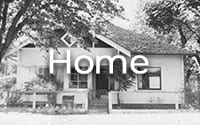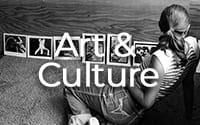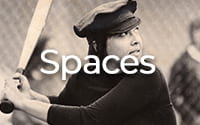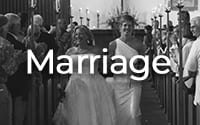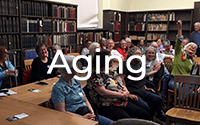GENDER AND SEXUALITY
GENDER AND SEXUALITY
It’s complicated. We come to understand our own gender and sexual identities throughout our lives. For those who don’t fit the cultural norms, that process is more conscious – sometimes difficult and sometimes thrilling. These narrators created a community in which they could explore their identities and together they produced a vibrant culture that came from self-knowledge and authentic living.
“I felt free. I felt like I was found.”
– Anne Laskaya –
PUZZLE PIECES
When they were young children, some of the narrators felt that they were “different” than their girlfriends and sisters. In the late 1940s and 1950s gender expectations were fairly rigid and there was virtually no representation of lesbianism on TV or in films, and certainly not in the material that young children had access to such as comic books, cartoons, children’s literature, or classroom curricula. Playground games that routinely featured homophobic epithets filled that vacuum and policed both gender expression and same-sex affection. Religious teachings and conservative parental attitudes to sexuality also contributed to their childhood feelings of confusion and suppression that, for many of the narrators, evaporated when they “put the pieces together” in high school or college and realized that they were gay. For other narrators, this process happened later in life when they fell in love with women or chose to be “women-identified-women” committed to self-love in the face of patriarchy and misogyny.
Drawing from decades of shifting perspectives about the source of sexual attraction, the narrators’ moving stories and interpretations of their own lives allow us to understand more clearly the historically-contingent terms for sexual orientation. Since the sexologists of the 19th century sought to create a “scientific” approach to sexuality studies, our culture has been obsessed with the causes of homosexuality. Is it inborn? Is it hereditary? Can it be read on the body? Is it a preference or an identity? Is it psychological or biological? Can it be changed? Despite many of the narrators’ feelings of joyous self-recognition when they realized they were lesbians, they had to navigate the suspicion of and prejudice against same-sex attraction. Fearing their parents’ rejection or the loss of their jobs, most experienced the repression and loneliness of “the closet” until they courageously and repeatedly “came out” to family, friends, and colleagues in order to live authentically and participate fully in the Eugene community.
GALLERY
FOR TEACHING AND RESEARCH
SPOTLIGHT: PAULA JO VADEN
In 1980, Paula Jo Vaden published a letter from her mother in Women’s Press. She recalls, “It was exciting to think of encouraging and inspiring others to come out to their parent/s and get an answer to the possibly internal nagging question of, ‘Will they accept me?’”


Photo credit: Copyright Meadow Muska, All Rights Reserved
Paula Jo at Gertrude’s Cafe (ca. 1978)

Paula Jo with Starflower truck (ca. 1979)
Ideas
Visit the Eugene Lesbian Oral History Project archive to read Saro Hendrickson’s thoughts about his transmasculine identity.
Links
Men in Place: Trans Masculinity, Race, and Sexuality in America – Book
Female Husbands: A Trans History – Book
Homophobia A Weapon of Sexism – Book
Word is Out: Stories of Some of Our Lives – Documentary
La Serenata – Short Fiction Film
Burton Before and After – Short Documentary
The Nearest Exit May Be Behind You – Essays
The World Turned: Essays on Gay History, Politics, and Culture – Essays
Dude, You’re a Fag: Masculinity and Sexuality in High School – Ethnography
Black. Queer. Southern. Women. – Book of Oral Histories
























